What you need to know
EYE DOMINANCE
This is a critical piece of accuracy in archery. Many of us have a dominant eye that works harder than the other, and while we use both eyes to see objects all the time, your dominant eye focuses on an object or aiming point naturally, and our visual preference doesn’t always match up. Eye dominance is very important to be aware of, both for beginner archers and seasoned vets, and should affect the way you shoot. With about 70% of people, their dominant eye matches their dominant hand, but that means 30% of people have a dominant hand that does not match their dominant eye.
Shooting a bow with your non-dominant eye can be extremely frustrating. It may feel harder than it should, can be difficult to distinguish the actual target location, and you may have the tendency to turn your head to try to see out of your dominant eye. Perhaps the most obvious sign of eye dominance issues is extreme left or right groupings. If you have been shooting for years and have had problems with grouping to the extreme left or right (right handed shooters shooting extreme left, left handed shooters shooting extreme right), you may be shooting with a non-dominant eye. Here are a few recommendations for testing your dominant eye.
DRAW LENGTH
Why is knowing your draw length so important?
Your draw length relates to how far you pull your bow string back. Knowing your draw length is essential information for buying a bow, determining arrow length and draw weight. (draw weight is the force in pounds needed to draw your bow)
1. Stand with your back to a wall and spread your arms out
level.
2. Get someone to mark the location of your fingertips, middle
finger to middle finger.
3. Measure the distance to get your arm-span in inches.
(To convert CM to INCH by divide by 2.54)
4. Your Draw Length = (Wingspan in INCH divided by 2.5)
5. Example: (Arm-span measurement 70” divided by 2.5 = 28)
Your draw length is 28”
BOW MEASURMENT
How the actual draw length on a bow is measured is done using the AMO standard.
This is done by measuring from the inside of the nock goose of you arrow to the pivot point (deepest part) of the grip then adding 1.75inches.
On many bows the pivot point aligns with the arrow rest hole, however this is not always the case so don't assume before checking.
Example:
Measuring from the nock groove to the pivot point coming out at 26.25inches would mean a 28in draw length bow.
HOW TO DETERMINE EYE DOMINANCE.
1. Find an object to focus on.
2. Extend your arms out and make a circle with your hands.
3. Keeping both eyes open, use the circle that you made and
place it around the object you are looking at.
4. Make sure the object stays in the circle at all times and pull
your hands slowly back to your face.
5. As you keep the object visible in the circle, our hands will
naturally come back to your dominant eye.
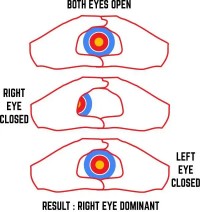
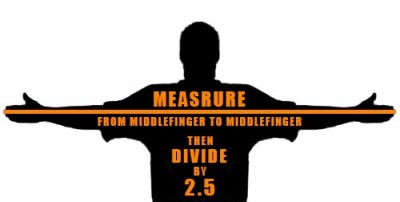
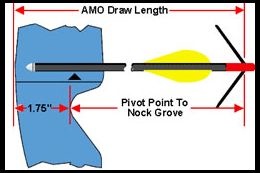
Bow Types
RECURVE BOWS
Recurve bows come in many varieties from simple traditional bows to Olympic recurves. The “Olympic recurve” is the type of bow Olympians shoot. It’s also the bow of choice for thousands of recreational archers who like a fantastic, challenging discipline.
COMPOUND BOWS
If you love precision marksmanship, consider a compound bow. They’re capable of incredible accuracy. The design uses a levering system of pulleys and cables, making it faster and decidedly more accurate than other types of bow. You can shoot compound bows for recreation, competition or bowhunting.
TRADITIONAL BOWS
Traditional bows are beautiful and shooting them is an organic experience. Close your eyes and imagine a simple bow. No sights, and no gadgets, to interrupt the flow of your shooting. While it is easier to be accurate with a compound bow, traditional bows are timeless, authentic and tons of fun to shoot.
BOW SIZE GUIDE



Recurve Compound Traditional



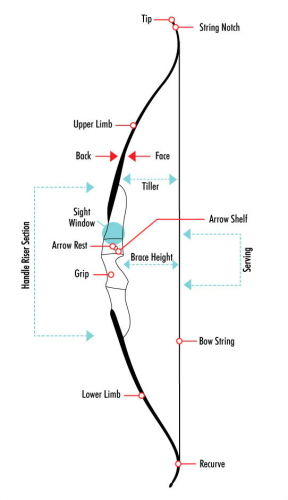
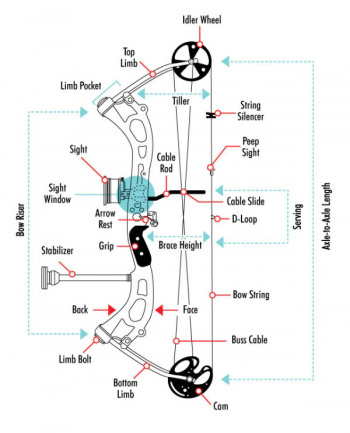
Helpful Links
These links have information for archers of all levels on Correct form, Bow tuning, Arrow selection and much more.
NZ Archery: Nine Steps to Gold
NZ Archery: Coaching Diagrams
Compound Archery: John Dudley - Nock On Archery
Recurve Archery: Jake Kaminski Archery
Guide To Archery For Kids & Beginners: Guide For Archery







